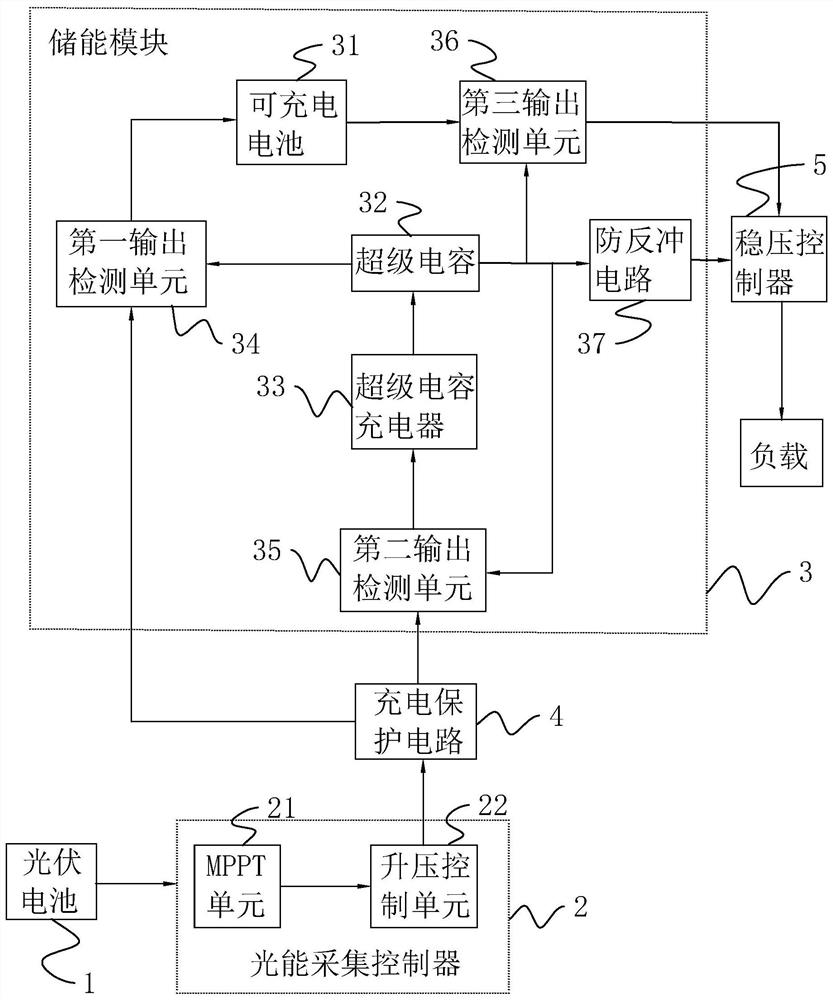Photovoltaic micro-energy acquisition system and hybrid energy storage automatic charging and discharging control method thereof
A collection system and hybrid energy storage technology, applied in photovoltaic power generation, current collectors, electric vehicles, etc., can solve the problems of high self-discharge rate and power waste, and achieve the effect of reducing power consumption and improving power supply.
- Summary
- Abstract
- Description
- Claims
- Application Information
AI Technical Summary
Problems solved by technology
Method used
Image
Examples
Embodiment Construction
[0041] The following is attached Figure 1-5 The application is described in further detail.
[0042] In wireless sensor network technology, wireless sensor network nodes account for most of the Internet of Things nodes. Wireless sensor network nodes have sensing, processing and communication functions, and need to consume a lot of power. The power supply method of traditional wireless sensor nodes Disposable batteries are used, but due to the limited size of the nodes, the use of disposable batteries for power supply cannot provide long-term functions for the nodes, and due to the large number of nodes, and many of them are distributed in places that are inconvenient for manual replacement, so in recent years, environmental energy harvesting technology has emerged. A new approach for wireless sensor node functionality.
[0043] The embodiment of the present application discloses a photovoltaic micro-energy collection system. refer to figure 1, the micro energy harvesting s...
PUM
 Login to View More
Login to View More Abstract
Description
Claims
Application Information
 Login to View More
Login to View More - R&D
- Intellectual Property
- Life Sciences
- Materials
- Tech Scout
- Unparalleled Data Quality
- Higher Quality Content
- 60% Fewer Hallucinations
Browse by: Latest US Patents, China's latest patents, Technical Efficacy Thesaurus, Application Domain, Technology Topic, Popular Technical Reports.
© 2025 PatSnap. All rights reserved.Legal|Privacy policy|Modern Slavery Act Transparency Statement|Sitemap|About US| Contact US: help@patsnap.com



